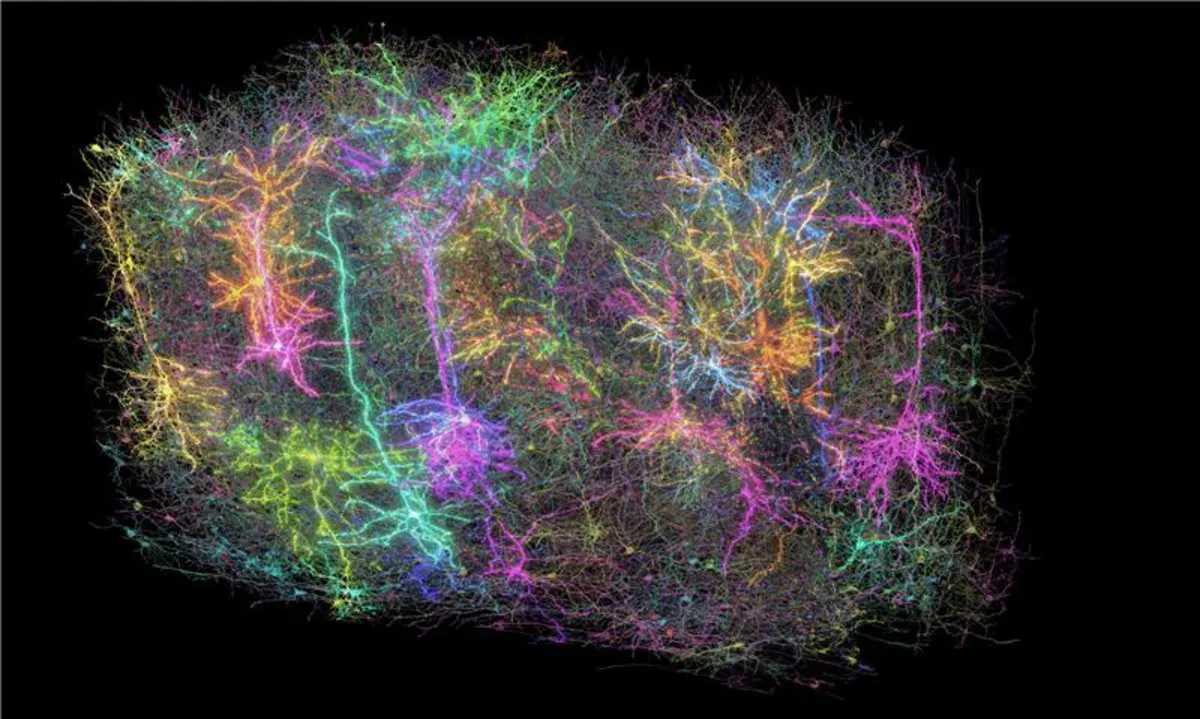
In a groundbreaking scientific initiative supported by the National Institutes of Health (NIH), a team of hundreds of researchers has successfully mapped the intricate connections of hundreds of thousands of neurons within the mouse brain. This monumental effort has allowed scientists to overlay the firing patterns of these neurons in response to visual stimuli, shedding light on how we perceive the world around us. This research marks a vital step in understanding the mechanisms through which our brains process visual information, ultimately helping to reconstruct the images we see daily.
The human brain is an extraordinary organ, composed of approximately 86 billion neurons that form trillions of connections with one another. The secrets behind our cognitive abilities—how we think, feel, and act—are deeply embedded in the complexity of the brain's wiring diagram and the rapid electrical signals that traverse it in milliseconds. Although this latest study focuses on a minuscule portion of the mouse brain, it reveals the intricate connections between neurons and illustrates how these connections lead to functional responses.
To conduct this pioneering study, researchers utilized genetically engineered mice whose neurons emit light upon firing. They presented these mice with video clips and subsequently recorded the neuronal firing patterns across a cubic millimeter of brain tissue—an area roughly the size of a grain of sand. Within this minute sample lies an astonishing complexity: approximately four kilometers of axons, which are the extensions of nerve cells used for communication, intertwine to form over 524 million synaptic connections among more than 200,000 cells.
Mapping these connections was no small feat. Research teams worked in intensive 12-hour shifts for 12 consecutive days, meticulously cutting and imaging ultra-thin slices of brain tissue using electron microscopy (EM). The subsequent reconstruction of this data posed significant challenges, requiring the precise stitching of nearly 28,000 EM images to align the connections across the brain tissue volume. This painstaking process was followed by months of tracing connections using deep learning algorithms, alongside manual and automated proofreading.
The volume of data generated during this study is staggering—amounting to 1.6 petabytes, which is equivalent to around 22 years of continuous HD video. This extensive dataset is crucial for enhancing our understanding of how visual information is processed within the cortex. The findings of this research come at a time when comprehensive neuronal maps are increasingly unraveling the mysteries of the brain.
In 2023, the NIH BRAIN Initiative produced the first complete cell atlas of the mouse brain, cataloging types and locations of more than 32 million cells. Last year, the Flywire project under the NIH BRAIN Initiative achieved the complete mapping of the common fruit fly brain, underscoring the importance of comprehensive brain mapping. This ambitious project was funded through the Machine Intelligence from Cortical Networks (MICrONS) Program and the NIH BRAIN Initiative.
The findings, documented in a series of 10 papers published in the Nature family of journals, represent over seven years of collaborative work by more than 150 scientists worldwide. The mouse connectome data can be visualized online using the MICrONS Explorer resource. John Ngai, Ph.D., director of the NIH BRAIN Initiative, is available for commentary on these findings.
The NIH BRAIN Initiative represents a multidisciplinary collaboration across ten NIH Institutes and Centers, aimed at pioneering discoveries in neuroscience that could revolutionize our understanding of the human brain. By fostering the development and application of innovative neurotechnologies, the BRAIN Initiative aims to provide unprecedented insights into brain function, health, and diseases, ultimately improving strategies to treat, prevent, and cure neurological disorders.
The National Institute of Neurological Disorders and Stroke (NINDS) is the leading funder of research focused on the brain and nervous system in the United States. NINDS's mission is to acquire fundamental knowledge about the brain and nervous system to alleviate the burden of neurological diseases. The National Institutes of Health (NIH), as the nation's medical research agency, encompasses 27 Institutes and Centers and operates under the U.S. Department of Health and Human Services. NIH is at the forefront of conducting and supporting essential medical research that investigates causes, treatments, and cures for both common and rare diseases. For more information about NIH and its programs, visit www.nih.gov.